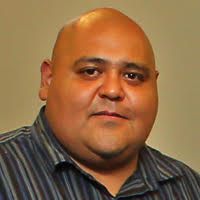A group of about 25 students and two facilitators gather slowly into a circle in a wood-tiled meeting space with large bay windows that overlook a nature trail.
Their goal is to come together and learn how to live in peace.
The students are participants in a workshop at the Peace Learning Center of Milwaukee, 3224 N. Gordon Place.
Creating a space for peace
The reason they sit in a circle, said Kamila Ahmed, a facilitator for the Peace Learning Center, or PLC, is because the circle begins and ends nowhere, giving young people equal space to feel comfortable.
“We want kids to take risks and be comfortable in this space,” she said.
The students, middle schoolers bused in from Trowbridge School in Bay View, learned about healthy communication, nonviolent conflict resolution and other peaceful actions as part of a Peacemakers Workshop.
The circle exercise begins by going over a set of fouls that identify actions that are not conducive to peace.
They include blaming, getting even, teasing, hitting, grabbing, name calling and making threats.
The exercise continues with each youth moving one by one inside the circle to name something they care about.
“It’s a way to help them realize that many of them care about the same types of things,” said Drea Rodriguez, executive director of PLC, a nonprofit.
An effort to influence culture
Organized in 2002, the PLC uses discussion, art, role play and other techniques as part of its curriculum to influence classroom culture; improve communication in families and in the community; and help youths who have already been exposed to violence.
Rodriguez said these are vital lessons in a city that has experienced record levels of deadly violence in each of the past three years – with many of the victims being children.
According to data from the Journal Sentinel Milwaukee Homicide Database, seven children from the ages of 10 to 17 have been murdered this year in Milwaukee. Many teens have been shot and survived.
During the workshops, students learn how to apologize, how to share their feelings, the power of words and how to react when someone hurts you with theirs.
Training the teachers
Over the years the organization has served more than 16,000 youths, although the PLC also works with teachers and other groups in the community.
Since September, facilitators for PLC have led workshops with over 85 different groups, including kindergarten through eighth grade students from private, charter and Milwaukee Public Schools. Among them were all the classrooms at Bryant Elementary School, 8718 W. Thurston Ave.
Tiffaney Hollowell, principal at Bryant, said her students and teachers have enjoyed the workshops and feel that they have helped them reduce conflicts at the school.
“I would say we decreased a lot of the playground issues,” she said. “We infuse what they learn with other social-emotional curriculum we teach at the school.”
The school is working to organize a group of parents at Bryant to participate in the PLC’s booster training, which is included in the package PLC offers to schools.
The price of that package depends on each school’s needs and resources, Rodriguez said. The PLC also is developing a curriculum for high school students.
Breaking the peace
After the circle exercise, Ahmed leaves the room to retrieve surveys for the youths but comes back empty handed. Co-facilitator Chelsea Muench chastises her for not finding them.
The unease in the air is palpable, as many students don’t realize the facilitators are acting out a skit to show the youths how easily peace can be broken and how it made them feel.
“I ain’t gonna lie, I got scared, like my heart started racing,” said one youth.
Other students agreed.
“That just goes to show that it only takes one person to break the peace,” Muench said.
Peace Index
In addition to the workshops, the PLC launched a new initiative this year to create a Peace Index. The index was funded by a “Data Dream Award” from Data You Can Use, an organization that helps connect people with data to improve communities.
The index consists of data compiled through surveys administered to youths who participate in PLC workshops. Before-and-after surveys indicate how peaceful students feel that day, among other questions aimed at determining what impact the PLC is having on specific ZIP codes and schools.
Victor Amaya, executive director of Data You Can Use, said the project, a collaboration with Northwestern Mutual Data Science Institute, provides pro-bono support with the surveys.
“We’re pushing to go a little deeper to tell the story of what is happening in these communities by collecting information and then have conversations around that data,” Amaya said.
Overall, said Rodriguez, her organization hopes to help young people know that they have the power to create peace in their lives and in their communities.
“Anyone can be a peace leader,” she said. “Everyone deserves to have peace in their life.”
Mendez, who is bilingual in English and Spanish, graduated from UW-Milwaukee, with a double major in Journalism and Media Communications and Sociology. In 2008, he won a Society of Professional Journalists' regional award for social columns dealing with diverse issues such as poverty, homelessness and racism. Currently, he's a master's degree student at the Diederich College of Communication at Marquette University.
His interests include scholastic research, social networking and the Green Bay Packers.




.jpeg)
